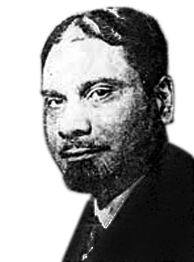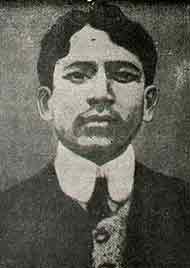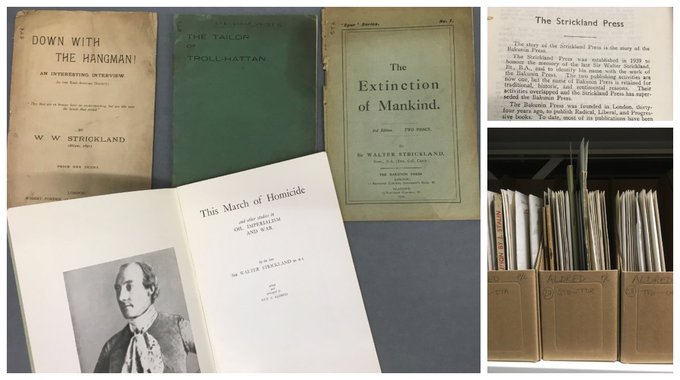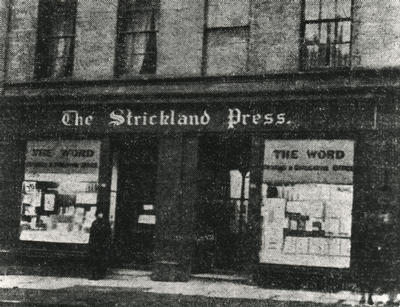C Gopalan Nair's Moplah Rebellion 1921 is a jouney through the news paper reports that appeared mainly in the English media.Abani Mukherji who interpreted and distorted it as the class war for the first time,turned to the reports of The Hindu and The Times,for facts.As a person who had been in journalism for 40 years,I can tell you that it is a profession that deals only with facts-it has corrective measures,when facts go wrong.Today's tendency among a large group of researchers in Kerala,is to misinterpret the factual reporting of 1921;it creates the impression that communalism is a sobriquet for communism.
The Rebellion caused an acrid narrative war of words within the print media, not only in Malabar but throughout the nation. The print media constructed the narratives of the victims. During the period between 1921-23, both vernacular and the English press regularly published reports on the Rebellion, depending upon the colonial official reports,as well as the victims who had sought asylum at Kozhikode.The Malayalam papers contained reports of Moplah outbreaks, the sources being the press communiqué issued by government , reports published by English newspapers,victim's versions and commentaries.Most of the reports of vernacular papers,presented the victim's version,while a few nationalist as well as pro-Khilafath muslim papers, presented the attacker's version.Nationalist papers had to resort to this,since Gandhi had painted the Khilafat as a national movement.
Among the newspapers, Malabar Islam, Swaraj and Muslim,were the mouth pieces for the Islam. Keralapatrika (Calicut), Malayala Manorama, Nazrani Deepika, and Yogakshemam used forceful language in their reports about the Rebellion.They wrote of the craftiness and cunningness of Mappilas. Some of the write-ups taunted the Hindus for their slavish mentality. Ellis, the Malabar Collector, convened a meeting of the editors of newspapers of Calicut in June 1922 to discuss the ways by which communal amity could be restored in Malabar( Malayala Manorama, 8th June, 1922. NMML, Delhi.).This meeting was attended by editors of Keralapatrika, Mitavadi, Reformer, Kerala Sanchari, Malabar Journal and Margadarsi while editors of Manorama and Spectator boycotted it.
Mathrubumi was started on 17 March 1923 and Al-Ameen in 1924.
Yogakshemam, the official organ of Yogakshemasabha published a series of articles related to the Rebellion. In its editorial captioned Malabarile Chelakalapam, Yogaksehamam came to the conclusion that 'the rioters consisted of three distinct set of people, one set that wanted to fight the government, another set that was out to loot while a third set were religious fanatics who wished to convert as many as possible. The bulk of the rioters belonged to the second set'.( Yogakshemam, 2 September,1921, NMML, Delhi; FNR dated 10 September 1921, No.37, 1921, Home (General), p.289. TNA.)
Nazrani Deepika from Mannanam,also published reports on the Rebellion. Deepika reported that Mappilas under the veneer of non-co-operation, took the opportunity to loot and convert Hindus to their religion. To prove the vandalism of Mappila rebels, the paper reported that Mappilas entered the Trikandiyur temple and placed a copy of Quran inside the Srikovil (sanctum sanctorum).Congratulating the Magistrate E F Thomas for suppressing the rebellion, Deepika in its editorial commented, 'Thus even the Malabar Mappilas have received an experience of Swaraj and the flavour of Hindu-Muslim unity and a sense of the might of British government. May the British flag now continue to fly in all glory".( Nazrani Deepika, 2 September 1921, 9 September 1921, NMML, Delhi; FNR, 10 Sept. 1921, Home (General), p.352, TNA).
Extreme language was used by 'Malabari', the South Malabar correspondent of Malayala Manorama, in covering the rebellion. He wrote, "It will be interesting to the readers to know that our Vasudeva Varmamaraja [Variyamkunnath Kunhamad Haji, the leader of the rebellion] who is Collector, Colonel and Governor [of Khilafath Raj] is infact a cart-puller . . . . It is heard that wife of Seethi Koya Thangal [another rebel leader] has eloped with someone and out of grief he is hiding in the forest'.( Malayala Manorama, 19 November 1921, NMML, Delhi.).
 |
Ali Musaliyar, a fundamentalist, was depicted in this vein by Kerala Patrika. The paper wrote, "This Musaliyar spoke that if one kills a Hindu, he can marry a houri [celestial beauty] in heaven"(Kerala Patrika, 5 September 1921.).
Concluding his long article titled 'Jonakappada' in Malayala Manorama, Moorkoth Kumaran,who belonged to a Thiya noble family of Thalassery, made an observation regarding the measures for prevention of such outbreaks in future. He observed, "In this background two remedies are possible – crush the fanaticism of Mappilas or make Hindus equally fanatic"(Malayala Manorama, 17 September 1921, NMML, Delhi).
The English papers were pro-Government and as such they presented their most authoritative accounts of the rebellion. The West Coast Reformer, an English paper from Calicut, published a lead article regarding the rebellion. On October 1921, the paper wrote:
"More than six weeks have passed by since the declaration by Mopla fanatics of Malabar of Jihad in the name of Khilafath. Ali-Musaliyar, the first Sulthan appointed in Tirurangadi mosque has surrendered . . . and stands in the dock with his lean hungry look facing his trial for the greatest offence . . .. The robber chieftain Variamkunnath Kunhahamed Hajee, is still at large perpetrating the cruellest deeds of savagery on the Hindu population. The criminal impudence and effrontery with which this uncrowned king of Nilambur imposes his will upon the trembling Hindus, reminds one of the marauding chieftains of the Robber hordes of Spanish Sierras … Beheading, the common game of oriental despots, is freely visited by this freebooter on Hindus of uncompromising faith without least compuction . . . . The interior of Ernad and Walluvanad taluks are still shivering with dread for this inhuman wretch and his compeer Chembrasseri Thangal".
Though Mathrubhumi was started only in 1923, two years after the Rebellion, umpteen articles and editorials dealing with Rebellion appeared in it during 1923 and 1924. In the year of its inception itself, K. Madhavan Nair,the editor and the Congress leader, wrote a series of articles examining the cause and course of the Rebellion. In one such article which elaborately deals with the fanaticism of Mappilas, he said: "The Mopla right from his childhood hears the songs that extols the martyrs died for the cause of religion and it generates wild desires in him. Or else, he hears about the case of apostasy and believes that he, who does not prevent such disgrace to religion, is outside its fold. In this matter, though Islam forbids forcible conversion, he follows the footsteps of Tipu Sulthan, not that of Prophet Mohamed and kills the Hindus indiscriminately"( K. Madhavan Nair, "Hindu-Muslim Relations" in Mathrubhumi, 24 May, 1923).
In another article of the same series Madhavan Nair wrote, "If Nairs, Thiyyas and Cherumas were united, they could have resisted the Mappila rebels. But due to age-old oppression of Nairs by Nambudiris, of Thiyyas by Nairs and of Cherumas by Thiyyas, the lower orders of Hinduism felt happy over the difficulties caused by the Rebellion to the higher castes'.(Mathrubhumi, 1 May, 1923.)
 |
| Murkoth Kumaran |
Mathrubhumi in its editorial, countering the allegation of The Muslim, a Muslim journal, reiterated its secular stand and stated that "if a letter is not published in the paper, it is being considered as debasement of a community. We used to get articles written by Nairs,Nambudiris, Nambisans and Mappilas. It is not by considering the caste or creed of the writer, that articles are published in Mathrubhumi".( Mathrubhumi, 25 March, 1924).
The articles and editorials of Mathrubhumi triggered a controversy among the leaders of the Congress and a group under Mohamed Abdurahiman and Moidu Moulavi wrote a series of articles in Al-Ameen, a nationalist paper from Calicut, attacking the anti-Muslim tone of such articles( E. Moidu Moulavi, Charithrachinthakal, Calicut, 1981, p.45.).
Vidwan T.K. Raman Menon, who had served as sub-editor in Al-Ameen, observed:"The relation between Mathrubhumi and Al-Ameen was not smooth. Overtly or covertly, Al-Ameen indulged in countering the editorials and misinterpreting the ideals of Mathrubhumi. I could not see any reciprocity or unity existing between these two nationalist dailies during that period".(S.K. Pottekkat et al. (ed.), Mohammad Abdurahiman (Mal.), Memorial Committee, Calicut, 1978, pp.145-146).
Due to this controversy that Madhavan Nair abruptly stopped publishing the remaining parts of the articles. Later, these articles were collected and published in a book form titled Malabar Kalapam in 1971 by his wife Kalyani Amma. About this book, Moidu Moulavi,who had made communal speeches during Khilafat movement, remarked that "it only helped to strengthen the anti-Muslim sentiments among Hindus and it was a fierce arrow aimed at the Mappila community ... Any Hindu who read this work with an objective mind would turn to be a staunch enemy of Mappilas"( E. Moidu Moulavi, op. cit., pp.46-47.)
Madhavan Nair in his book, traced the root of the rebellion back to Tipu, who not only caused many a hardship to Hindus of Malabar but became the guru (preceptor) of later Mappila revolts(K. Madhavan Nair, Mappila Kalapam, Mathrubhumi Publishers, Calicut, 1971, p.15).
In its editorial of 18 January 1935, titled Mathrubhumikku Mathamilla ('Mathrubhumi has no religion') the paper stated, "To Mathrubhumi both Hinduism and Islam are alike . . . we don't consider it a sin either embracing or deserting a particular religion. Al-Ameen has to understand that K Kelappan is not an Arya Samajist."( Mathrubhumi, 18 January 1935).
Kerala Chandrika, a pro-Khilafat muslim journal wrote: "The government have been trying to disprove the tenets of their religion and injuring their leaders and the inglorious collector of Malabar with a military force entered the holy mosques and stirred the ire of the community. If, while the revered Malappuram Thangal, one of the heads of their religion was praying in the mosque that the holy temple of God should be surrendered by military, which Mohammedan could keep still?" (Kerala Chandrika, 29th August 1921. Also see Fortnightly Report, No.36, 1921, Home (General), p.244. TNA).
Kerala Chandrika in an article to stir up the wealthy muslims to a sense of their duty towards afflicted muslims in Malabar said, "At night some police officers and their attendants come riding on the white horse [Fully drunk-Tr] and begin to outrage the chastity of helpless muslim women! Who is there to attend to the wretchedness of these poor people?"( Kerala Chandrika, 24 July 1922, MNNPR, 1922, TNA.)
A note in the same paper in 1921 opined that the reports about Mopla's looting Hindu houses, was altogether unfounded, that absolute falsehood against the Muslims were published in English-owned papers.( F.N.R. No. 36, 1921, Home Administration, p.245, TNA.)
Referring to the plight of Hindus in Malabar during the Rebellion, Dr.B S Moonje,Hindu Maha Sabha leader, in his article in Indian Social Reformer (Bombay) wrote, "With us [Hindus] it is a serious problem of scientific investigation into our sociology to find out the causes of such helplessness and unpreparedness of Hindus to defend their homes and women folk . . . Division and hatred have made us cowardly and slavish"(The Indian Social Reformer, Bombay, 26 March 1922, NMML, Delhi).
Malayala Manorma replied to Muslim allegations: "it is to be regretted that Muslim papers in Bombay and Punjab are publishing reports about the vandalism of Hinduism in Malabar. They report that, in the absence of male Mappilas in South Malabar, the Hindus are consternating the Mopla orphans and raping their mothers"(Malayala Manorama, 7 October 1922, NMML Delhi.).
Gandhi,in repentece, stated that "Moplas were never particularly friendly to the Malabar Hindus. They had looted them before. Their notions of Islam were of a very crude type (Gandhi, Collected Works, Vol.21)
Gandhi wrote to the editor of Vishala Keralam (Madras), "How to reach the Moplas as also the class of Hindus whom you would want to reach through your news paper, is more than I can say, but I know that Hindus should cease to be cowardly. The Moplas should cease to be cruel. In other words each party should become truly religious" ( Gandhi, Collected Works, Vol. 23 ).
The impact was not over even after 18 years.In 1939,Mathrubumi in its editorial titled, 'Communalism in the garb of Nationalism' wrote, "However, certain Muslim congress men held an exclusive meeting under the banner of Kerala Muslim National party to discuss the matter [secret circular issue]. To hold a communal meeting to discuss a common issue may be due to the fact that ( Muhammad) Abdurahiman is a Muslim. What will be the future of congress, if a communal group is formed within it... The Hindus, Muslims and the Christians within the congress have to be ready to address common issues without communal biases."(Mathrubhumi, 8 April 1939.)



















